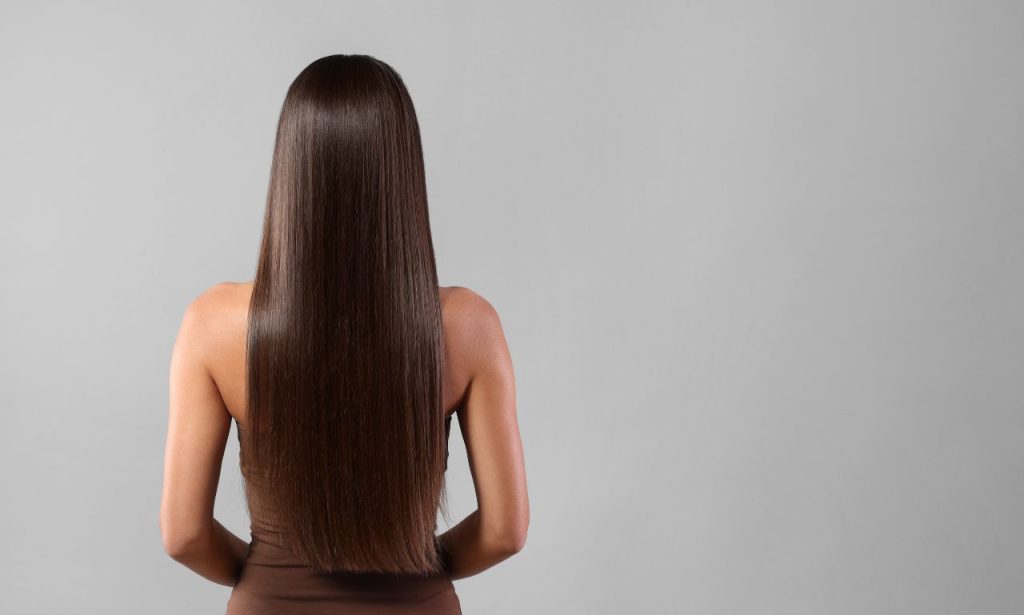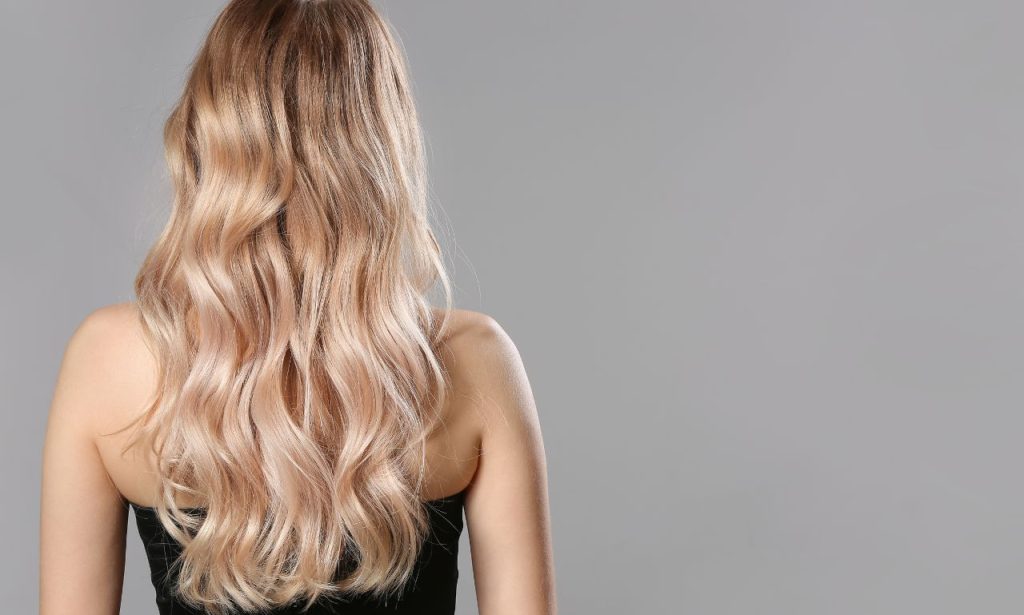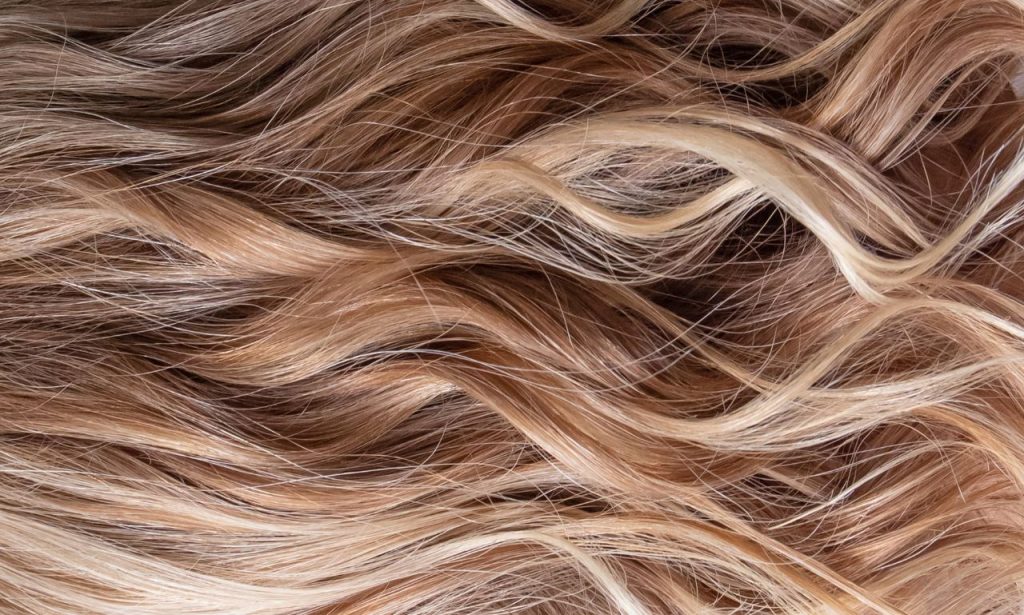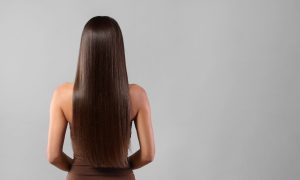Have you ever wondered why your hair behaves differently from your friend’s? Your strands may form perfect ringlets while theirs fall in loose waves. The answer lies in understanding your natural hair texture – something many take for granted until we struggle with styling or maintenance.
I’ve spent years researching hair patterns and textures, and I can tell you that knowing your specific hair type is a game-changer. Think about it – using products designed for straight hair when you have coily hair is like wearing shoes two sizes too small. Not a good fit!
In this guide, I’ll explain everything you need to know about hair textures. You’ll learn how to identify your unique pattern, the science behind why your hair grows the way it does, and the best ways to care for your specific type. You’ll have a clear roadmap to healthier, more manageable hair by the end.
What Is Hair Texture?
Hair texture refers to the natural shape or pattern of your hair strands. It’s the degree of curl in your hair, ranging from straight to coily. This characteristic determines how your hair behaves, what products work best, and which styling methods yield the best results.
Many people confuse hair texture with thickness or density. These are separate characteristics! Hair texture describes the shape of individual strands explicitly, while thickness refers to the diameter of each strand (fine, medium, or coarse). Hair density, on the other hand, describes how many hairs you have per square inch on your scalp.
Understanding your true texture requires observing your hair naturally—without heat styling, chemical treatments, or heavy products. For optimal results, you’ll want to base your hair care routine on this natural pattern.
Straight Hair

Straight hair falls from root to tip without any curves or bends. This texture reflects light easily, giving it a naturally shiny appearance that many envy. The sebum (natural oil) from your scalp travels easily down straight strands, sometimes making this hair type look oily faster than others.
There are subtle variations within the straight hair category. Type 1A is entirely straight, delicate, and often quite soft. Type 1B has a bit more body and might have slight bends. Type 1C, while still classified as straight, may have a slight wave or body to it and is often thicker.
People with straight hair typically struggle with volume rather than frizz. Their main challenges include keeping hair from looking flat and managing oil buildup. Lightweight volumizing products and regular clarifying treatments work wonders for this hair type.
I’ve found that straight-haired folks often benefit from washing more frequently than those with textured hair. Since oil travels down the hair shaft more easily, refreshing with dry shampoo between washes can help maintain a clean look without stripping natural oils completely.
Curly Hair
Curly hair forms spiral patterns, ranging from loose loops to tight corkscrews. This texture is naturally voluminous and often appears shorter than its actual length due to the curl pattern. The structure of curly hair means that natural oils don’t travel down the hair shaft as easily as with straight hair.
Type 3 hair encompasses all curly patterns. Type 3A features loose, large curls about the width of a wine cork. Type 3B curls are springy ringlets roughly the size of a marker. Type 3C consists of tight corkscrew curls about the width of a pencil.
The main challenges for curly hair include managing frizz, preventing dryness, and maintaining definition. Moisture is crucial for this hair type. Curls can become frizzy, lose shape, or break without enough hydration.
Curly-haired individuals invest in sulfate-free shampoos, deep conditioning treatments, and leave-in products with plenty of moisture. The “squish to condish” method works amazingly well – it involves scrunching conditioner into soaking wet hair to encourage curl formation and lock in hydration.
Wavy Hair

Wavy hair falls between straight and curly textures, forming “S” patterns rather than tight coils or perfectly straight lines. This versatile texture can often be styled straighter or curlier, depending on the products and techniques used.
Type 2A waves are very loose and fine, resembling bent straight hair. Type 2B features more defined waves that form a precise “S” pattern. Type 2C waves are the most defined in this category, bordering on curly with well-formed “S” shapes that may spiral at the ends.
People with wavy hair typically struggle with inconsistency. Some days, their waves look defined and beautiful, while others may fall flat or frizz out. Humidity often plays a huge role in how wavy hair behaves.
From my experience, the key to enhancing waves is using lightweight products that won’t weigh down the texture. Mousses, light gels, and sea salt sprays can work wonders. Many wavy-haired folks succeed with the “plopping” technique – wrapping freshly washed hair in a microfiber towel or t-shirt to encourage wave formation without disrupting the pattern.
Coily Hair
Coily hair, known as kinky or afro-textured hair, forms tight coils ranging from “S” patterns to “Z” patterns. This incredibly resilient hair type has the most volume and shrinkage of all textures. The unique structure of coily hair makes it particularly prone to dryness, as natural oils struggle to travel down the tightly coiled strands.
Type 4A coils are dense and springy, forming an “S” pattern about the width of a crochet needle. Type 4B hair forms a tighter “Z” pattern with sharp angles and less definition. Type 4C hair has the tightest coil pattern with maximum shrinkage – hair can appear much shorter than its actual length.
The primary challenges for coily hair include preventing breakage, retaining moisture, and managing shrinkage. This hair type requires the most humidity and gentle handling of all textures.
I always tell my clients with coily hair to minimize shampooing (once a week or less), rely on co-washing (washing with conditioner) between shampoos, and never skip deep conditioning treatments. Protective styles like braids, twists, and updos can help minimize manipulation and reduce breakage in the long run.
Is my Hair 2A 2B or 2C?
Distinguishing between wavy hair subtypes can be tricky, especially since waves can vary even on the same head of hair. Here’s how to tell the difference:
Type 2A waves are barely there – they’re subtle bends that give the hair some movement but don’t form defined “S” patterns. Your hair likely falls flat quickly and may need texturizing products to enhance the wave.
Type 2B waves form more noticeable “S” patterns, especially from the mid-lengths to the ends. The hair has more body and volume than 2A, and you might notice some frizz at the crown.
Type 2C waves are the most defined waves before entering the curly territory. The “S” pattern is evident from root to tip, with some pieces possibly forming spirals at the ends. This type typically has more frizz potential and may require stronger hold products.
I recommend the wet hair test. Wash your hair, apply a lightweight leave-in conditioner, and let it air dry without manipulation. The natural pattern that emerges will give you the most accurate indication of your wave type.
How Do I Know if I Have 4C or 4B Hair?
The difference between 4B and 4C hair can be subtle but essential for proper care. Here’s how to distinguish between them:
Type 4B hair forms a “Z” pattern with explicit angles rather than spiral coils. When stretched, you can see the zigzag pattern. This hair type has less definition than 4A but more than 4C.
When left naturally, Type 4C hair has the tightest coil pattern with minimal definition. The coils are so tight that they may not be readily apparent without stretching. This hair type experiences the most shrinkage—up to 75% of its length.
The most reliable way to identify whether you have 4B or 4C hair is to look at a single strand. Stretch it gently and observe the pattern. If you see a clear zigzag with some rounded bends, you likely have 4B hair. If the pattern is barely discernible unless fully stretched, you probably have 4C hair.
I’ve found that many people have a mixture of 4B and 4C textures throughout their heads, with 4C typically being more prevalent at the crown and 4B around the perimeter. This is perfectly normal and requires adaptable care techniques.
How is the Texture of Your Hair Determined?
Your hair texture is primarily determined by genetics. The shape of your hair follicle dictates the shape of the hair that grows from it. Straight hair grows from round follicles, while oval or asymmetrical follicles produce wavy or curly hair. The more asymmetrical the follicle, the curlier the hair.
Hormone fluctuations can also influence your hair texture temporarily or permanently. Many women notice changes in their hair texture during puberty, pregnancy, or menopause. Certain medications, particularly those affecting hormone levels, may alter your natural pattern.
Environmental factors and hair care practices can affect how your texture appears, but they don’t change your genetic texture. Heat styling, chemical treatments, and certain illnesses can temporarily or permanently alter your hair’s behavior.
Research shows that ethnicity plays a significant role in determining hair texture. Different ethnic backgrounds are associated with particular hair types, though every group has enormous variation. This genetic diversity explains why siblings can have different hair textures despite sharing with their parents.
What’s the Rarest Hair Texture?

True Type 1A hair – straight with no wave or bend–is rare globally. This texture is common in East Asian populations but uncommon in other ethnic groups. The hair is typically fine, extremely smooth, and resistant to curling.
Type 3A (loose curls) among African descent populations is relatively uncommon, as tighter curl patterns are more prevalent genetically. In European populations, Type 4 textures are the rarest.
I should note that the rarity of hair textures varies significantly by geographic region and ethnic background. What’s rare in one part of the world might be common in another. This beautiful diversity is what makes human hair so fascinating to study!
Conclusion
Understanding your natural hair texture is the foundation of effective hair care. By identifying whether you have straight, wavy, curly, or coily hair and pinpointing your specific subtype, you can select the right products, techniques, and styles to enhance your natural pattern.
Remember that embracing your natural texture doesn’t mean you can’t experiment with different styles. Instead, it teaches you to maintain healthy hair regardless of how you wear it. Your texture is unique and reflects your genetic heritage – something worth celebrating!
I encourage you to observe your hair in its natural state. Try the techniques specific to your texture type and see how your hair responds. You might be surprised at how manageable your hair becomes when you work with your natural pattern instead of against it.
ALSO READ: How to Improve Scalp Health?
FAQs
Hormone changes, aging, medications, and health conditions can alter hair texture.
Straight hair typically needs cleaning every 1-2 days, wavy hair every 2-3 days, curly hair every 3-4 days, and coily hair every 7-10 days.
Texture refers to the shape of individual strands, while density describes how many hairs you have per square inch on your scalp.
Absolutely! Most people have 2-3 different texture patterns throughout their heads.
Cutting doesn’t change the texture, though removing weight may make your pattern appear more defined.

